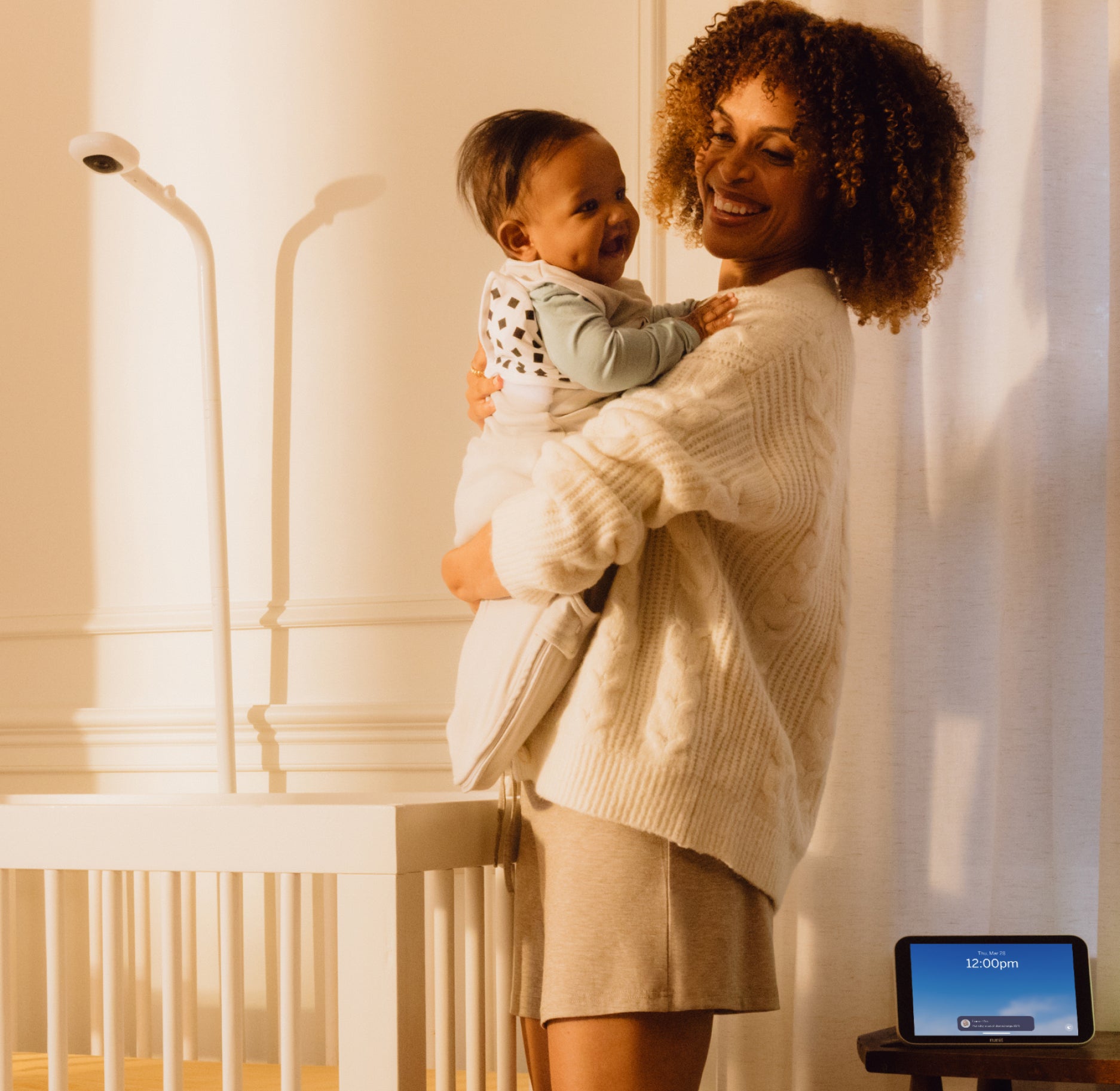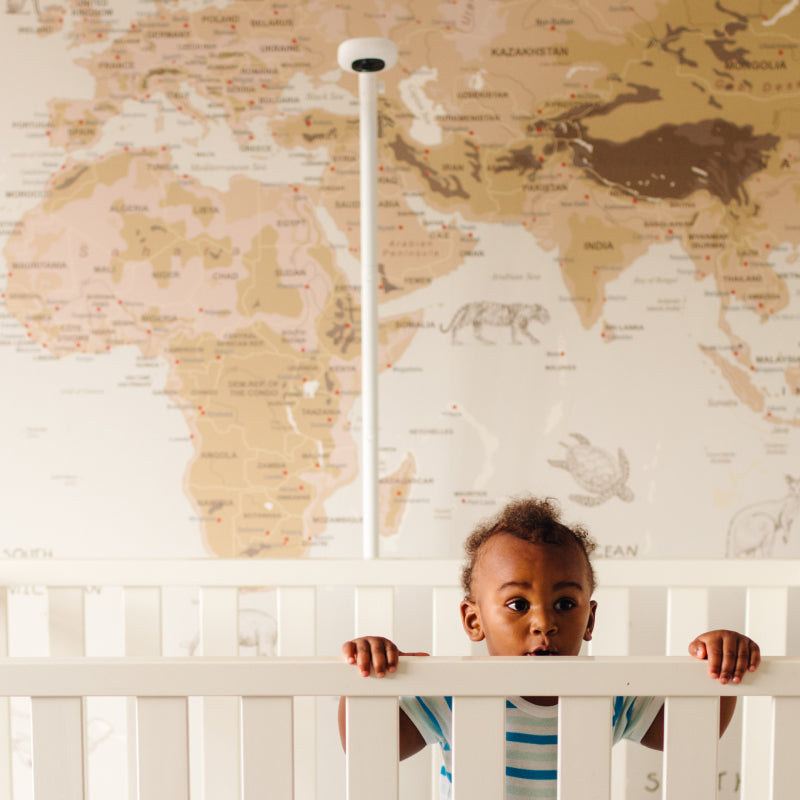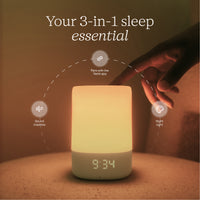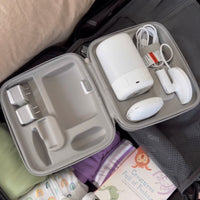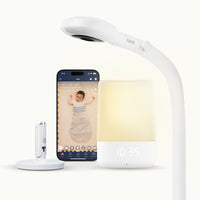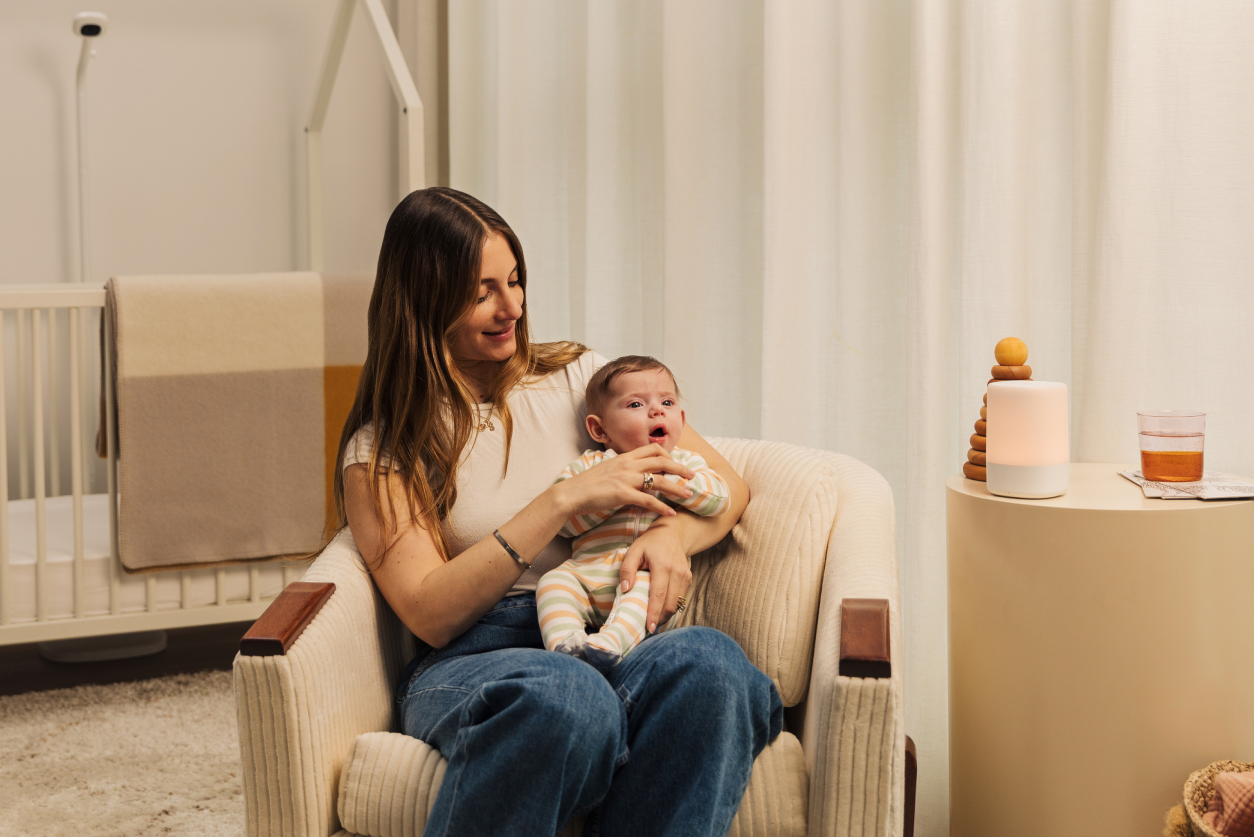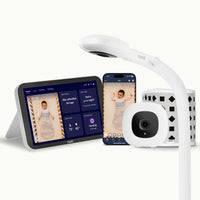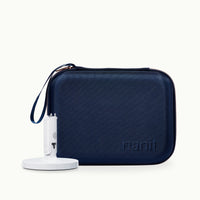In a world full of noise, silence is often a welcome reprieve. Barking dogs, nonstop traffic, the dings and alarms on our devices—a break from any and all of these sounds can feel like pure, peaceful bliss. The key to calming our anxious hearts and letting us have a solid night’s sleep.
But when it comes to babies, some noise may actually be helpful. You might be wondering, “Why do babies like white noise?” Research indicates that certain sounds can nurture quality sleep, particularly in the first few years of a child’s life. In fact, scientists have uncovered different types, even shades of noises, that can result in better sleep for your baby.
So, what kind of noise is best for sleeping?
Understanding sleep noises and their effects on babies
Using noise to encourage your baby to calm down and go to sleep may seem counterintuitive. Isn’t quiet the gold standard for all rest? In a way, yes, but there’s an enormous difference between total silence and a soothing drone. The former can make a baby feel anxious and alone, while the latter can provide reassuring comfort.
Scientists have identified three primary “color noises” that may have sleep-promoting benefits:
- White noise. White noise tends to steal the scene when it comes to sonic shades—for good reason: The noise is a fusion of all the sound frequencies recognizable to the human ear. Together, they create an ambient “shush” that mimics the sounds of life your baby grew used to in the womb when your heartbeat, digestion, voice, and more were audible 24/7. White noise is also the most comprehensively studied color on the spectrum.
- Pink noise. Imagine the perfect afternoon of lounging with a favorite book and slipping into a wonderful nap. Chances are, the sounds of lightly falling rain or rustling leaves are part of the daydream. Both are pink noise. It, too, captures all of the frequencies detectable by humans, but with an emphasis on lower tones. They result in the sound having a flatter, more balanced tenor.
- Brown noise. Brown noise (or red noise) may not sound as enchanting and baby-friendly as white and pink noise, but it has its own set of advantages. Characterized by deeper, lower notes, it evokes a rushing waterfall, distant thunder, or the low roar of waves.
These aren’t the only colors in the rainbow of sound. Black noise, for example, is defined as the absence of noise (or silence with just a touch of random sounds), while purple noise conjures up a high-pitched hiss that’s likely more irritating than calming. So brown, pink, and white noise are conducive to your goal: crafting a restful environment.
Comparing white, brown, and pink noise for baby sleep
Now you know what the colors “sound” like. So what color noise is best for sleeping?
It completely depends on your baby and their unique preferences. Some little ones might be more comforted by the steady hum of white noise, while others might find the gentle rumble of brown noise more soothing. Still others may prefer the soft, calming sounds of pink noise.
Here’s another breakdown to help you decide:
- White Noise carries all the sound frequencies you can hear in equal volumes, which helps block out external noise. It’s a consistent, steady sound that can be very effective in helping babies fall and stay asleep.
- Pink Noise has a lower pitch than white noise, producing deeper, more ambient sounds. Its softer tone can be particularly soothing, making it a great option to try with your baby.
- Brown Noise amplifies lower frequencies and produces a comforting and soothing sound. It’s often described as deeper and richer, which can create a relaxing environment for sleep.
To find out which noise best suits your little one, try each type and observe your baby’s reaction. White noise, pink noise, and brown noise all offer unique benefits, but your baby's comfort is the ultimate guide.
Explore the benefits of white noise for baby sleep
White noise has the potential to persuade babies to fall asleep faster, and as such, has become the go-to solution for many parents. White noise is able to:
- Drown out disruptive sounds. Toddler ready to send their block tower crashing just as you’ve put your newborn down for a nap?. Or perhaps you live on an active street filled with environmental noise, such as the sounds of cars, lawnmowers, and kids at play. Whatever your situation, white noise can dampen distracting sounds that might startle your baby out of sleep.
- Increase comfort. Again, white noise creates an “auditory” space that sounds like the womb. Experts suggest that this may make babies feel less alone, and anxious—and provide the comfort they need to sleep.
- Enhance sleep and improve sleep duration. Newborns are preprogrammed to wake up every 20 minutes or so in what’s known as “sleep arousal.” Hearing the calm notes of white noise when they’re roused from rest may help them return to sleep. Further, a Nanit Lab study on the power of white noise discovered that babies sleep two hours more each night when they’re exposed to white noise.
- Another plus: As your little one grows older, white noise may start to signal that it’s time to sleep, much in the same fashion that dimming the lights tells our brains to start winding down. White noise may also help decrease crying in upset babies and improve ADHD symptoms in older children.
The importance of baby sleep
Determining what noise is best for sleeping is vital for a number of reasons, especially if your baby struggles to sleep sloundly in the first place. Study after study shows that sound sleep in infancy:
- Helps babies establish a circadian rhythm. Ever wonder why your newborn can nod off within an hour or two of waking them for their first feeding of the day. Babies aren’t born with a circadian rhythm, which supports healthy sleep-wake cycles; they also can’t distinguish between night and day. Sleep in and of itself can help with “sleep maturation” and prompt your baby’s internal clock to start ticking.
- Nourishes cognitive development. Your baby may seem like they’re a planet away when they’re asleep, and in some ways, they are. Quality sleep strengthens the connection between the right and left hemispheres of your baby’s brain, fosters cognitive growth, and influences their capacity to learn and consolidate memories.
Best noise machines for your baby’s sleep
Interested in bringing some color into your world, at least in terms of ambient noise? If so, be on the lookout for a product that features:
- An array of sounds, both in sonic shades and those heard in nature
- Smartphone connectivity
- Audio tracking
- A compact, easily portable design that’ll enable you to create a sleep-inducing space whether you’re at home or on the road
How loud should a white noise be for baby? Safety guidelines recommend to set sound machines at 50 decibels or lower and place them at least 7 feet from your baby’s resting head.
Discover the perfect shade of noise with Nanit
The most ideal sleep noise for your child is dependent on their sensitivities, developing personality, and preferences. Your best bet is to explore a range of noises (or no noise at all), including lullabies and soft, tranquil music.
Nanit's Sound + Light Machine includes a whole library of soothing sounds, such as rain, wind, waves, and white noise. It also features Cry Detection and Temperature and Humidity Tracking, all of which you can control from the Nanit app. Additionally, if you’re craving a clearer picture of your baby’s sleep, check out the Nanit Pro Camera. With its sleep scores, smart alerts, and high-quality video, it can help you rest assured your baby is getting the sleep they need to flourish.
Experience the rewards of sound sleep with Nanit.
Sources: Healthline. The pros and cons of using white noise to put babies to sleep. https://www.healthline.com/health/parenting/white-noise-for-babies Iranian Journal of Public Health. White noise and its potential applications in occupational health: a review. https://www.ncbi.nlm.nih.gov/pmc/articles/PMC10135504/ The Washington Post. Beyond white noise: how different ‘color’ sounds help or hurt. https://www.washingtonpost.com/home/2023/10/09/white-noise-color-sounds-brown-pink/ WebMD. White noise, pink noise, and brown noise: what’s the difference?https://www.webmd.com/sleep-disorders/pink-noise-sleep Parents. How white noise can help your baby sleep. https://www.parents.com/white-noise-for-baby-how-it-can-help-infants-sleep-8413752 Sleep.com. How white noise creates a sense of calm.https://www.sleep.com/sleep-tech/white-noise-for-sleep Healthline. What is pink noise and how does it compare with other sonic hues? https://www.healthline.com/health/pink-noise-sleep Archives of Disease in Childhood. White noise and sleep induction. https://pubmed.ncbi.nlm.nih.gov/2405784/ Sleep Medicine. The effects of white noise on sleep and duration in individuals living in a high noise environment in New York City. https://pubmed.ncbi.nlm.nih.gov/34049045/ Noise & Health. Spectral content (colour) of noise exposure affects work efficiency. https://www.ncbi.nlm.nih.gov/pmc/articles/PMC7986458/ Frontiers in Human Neuroscience. Overnight exposure to pink noise could jeopardize sleep-dependent insight and pattern detection. https://www.ncbi.nlm.nih.gov/pmc/articles/PMC10722168/ Cleveland Clinic. Circadian rhythm. https://my.clevelandclinic.org/health/articles/circadian-rhythm Agency for Science, Technology, and Research. Why is sleep so important to babies? https://www.a-star.edu.sg/sics/news-views/blog/blog/human-development/why-is-sleep-so-important-to-babies Enfamil. The importance of sleep in child development. https://www.enfamil.com/articles/importance-of-sleep-child-development/
Key takeaways:




